The North Pole
Between 1898 and 1909, Newfoundland and Labrador ice captain Bob Bartlett and American explorer Robert Peary made three separate attempts to reach the North Pole. Although the expeditions were of tremendous historic importance and earned both men prestigious awards, they also sparked considerable controversy. Some members of the press and scientific community doubted Peary reached the pole at all because he did not bring back any supporting evidence. Rival explorer Frederick Cook also insisted that he reached the pole a year before Peary, starting a bitter and protracted dispute between the two men and their supporters.
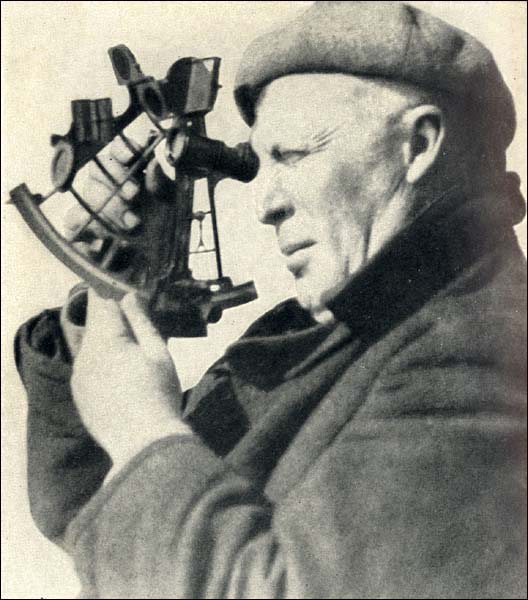
Despite the uncertainty surrounding Peary's final expedition to the North Pole, Bartlett received widespread praise for reaching, and recording, a latitude of 87º 48' North in the spring of 1909. His position, about 130 miles from the pole, was further north than any other human being had confirmed travelling in history; it later earned him the prestigious Hubbard Medal from the National Geographic Society as well as a place in history.
The Windward
Bartlett's career in polar exploration began in 1898 after his uncle, John Bartlett, invited him to serve as first mate aboard the Windward, flagship of Peary's North Pole expedition. Under the elder Bartlett's command, the vessel departed from New York on 3 July 1898 for the north coast of Ellesmere Island, the northernmost land mass in what is today known as the Canadian Arctic Archipelago. From there, Peary and other expedition members hoped to cross the remaining 430 miles to the pole by dog team, sending out advance parties to break a trail and establish supply caches along the way.
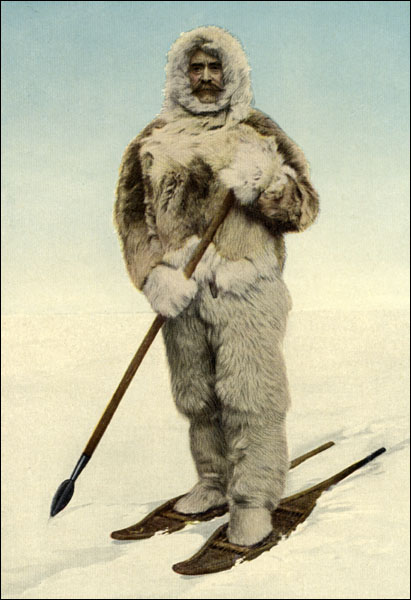
The Windward, however, became frozen in sea ice near the south shore of Ellesmere Island, about 300 miles short of its destination. Unable to free the ship until the following spring, Peary decided to establish a land base and try to reach the northern tip of Ellesmere Island by dog sledge. All winter long, expedition members sledged supplies across the snow and ice. They worked through the long Arctic night and in temperatures as low as minus 45 degrees Celsius. Peary suffered severe frostbite and had to return to the Windward in the spring of 1899, where the ship's surgeon amputated eight of his toes.
Undaunted by this setback and determined to reach the pole, Peary spent the next three years on Ellesmere Island planning another trip north. By 1902, however, the expedition's supplies had grown dangerously low and its members had to make a return voyage home before Peary could organize another attempt for the pole.
Despite the hardships and disappointments of Bartlett's first trip north, he acquired a deep appreciation for Arctic living from his Inuit companions. "I learned how to take care of myself in cold weather," he wrote in his 1928 publication, The Log of Bob Bartlett. "I found out how to mix blubber with my diet so that I could stand the cold better. I learned to do long tricks behind a dog team forty, fifty, and sixty miles a day at a stretch" (129-130).
The voyage also solidified Bartlett's friendship with Peary, who invited him to captain the flagship of his next expedition to the North Pole. While Peary raised money for the trip, Bartlett returned to his hometown of Brigus and commanded vessels at the annual spring seal hunts. It was not until July 1905 that Bartlett departed for his second trip to the Arctic aboard the steel-hulled Roosevelt.
The Roosevelt
Under Bartlett's command, the Roosevelt successfully reached the northern tip of Ellesmere Island by 5 September 1905. Expedition members spent much of the fall and winter hunting caribou and musk ox to boost food supplies and preparing for the long journey north over the frozen Arctic water. As in 1898, Peary planned to send advance teams north to cut a trail and establish a chain of camps. Peary's skeleton crew would then sledge the rest of the way to the pole, having saved much of its energy for the final leg of the journey.
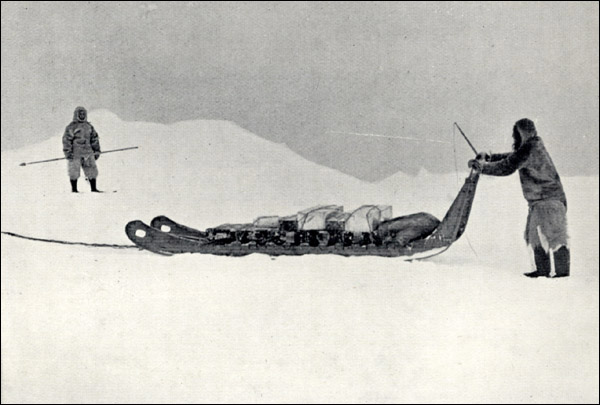
Bartlett was part of the first party, which left Ellesmere Island on 19 February 1906; other teams followed in the coming days and weeks. Storms, rough ice, and open water, however, greatly slowed their progress, making the journey much more difficult and dangerous than anyone anticipated. After two months of sledging, expedition members decided to turn back because their supplies had nearly run out and many of their dogs had died or grown dangerously weak. If they continued north, the men would likely not be able to return to Ellesmere Island alive.
Although the expedition failed to reach the North Pole, Peary's skeleton crew, which did not include Bartlett, came to within about 174 miles of its goal in late April and set a new world record for furthest latitude north. In 1906, the National Geographic Society awarded Peary its Hubbard Medal for polar exploration.
On 4 July 1906, Bartlett and other expedition members departed Ellesmere Island for North America aboard the Roosevelt. Sea ice badly battered the ship soon after it left, destroying its rudder and breaking two of its four propellers. Bartlett managed to navigate the ship to Greenland for repairs, but heavy storms and sea ice continued to plague the vessel's journey south after it departed on 10 September. The vessel lost another rudder on 4 October and coal supplies grew so depleted that the crew eventually had to chop wood from the between-deck passages for fuel.
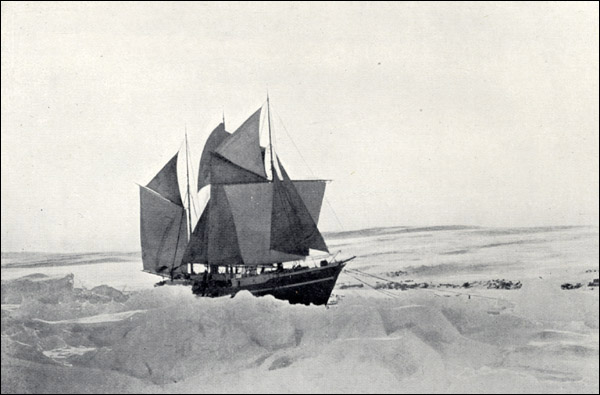
On 24 December 1906, almost six months after leaving Ellesmere Island, Bartlett navigated the Roosevelt into the port of New York. "The poor old Roosevelt, as well as ourselves, was ready for the insane asylum or the dump heap," he later wrote in his Log (149).
Third North Pole Expedition
Unyielding in his determination to reach the pole, Peary planned a third trip north upon his return to the United States. Bartlett again agreed to captain the Roosevelt and the expedition arrived at Ellesmere Island in September 1908. Expedition members followed the same plan as they did in 1906, establishing a string of supply camps toward the pole from their base at Ellesmere Island. This time, favourable weather conditions and experience from previous attempts assisted their progress north and the team set up camp within 150 miles of the pole by the end of March.
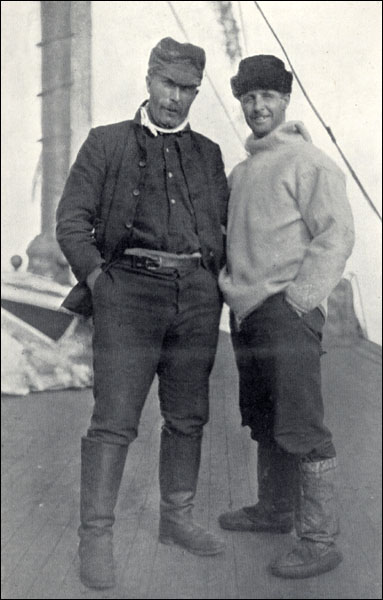
It was from here that Peary ordered Bartlett back to Ellesmere Island on either 31 March or 1 April (different sources suggest different dates). Bartlett was devastated. He had spent weeks sledging through the cold and ice, all the time expecting to accompany Peary to the pole — according to Bartlett biographer Harold Horwood, the two men had made such an arrangement while still in North America. Instead, Peary decided to replace Bartlett with his long-time companion and fellow explorer Matthew Henson. Accompanying the two men to the pole were four Inuit team members: Ooqueah, Ootah, Seegloo, and Egingwah. "It was a bitter disappointment," Bartlett later told a New York Herald reporter. "I don't know, perhaps I cried a little" (Horwood 87).
Thwarted in his ambition of reaching the pole, Bartlett decided instead to reach the 88th parallel before turning south. He left camp early the following morning and walked alone for about five miles north. When he returned, his readings showed he had only reached a latitude of 87º 47' — strong winds had pushed the ice south, causing Bartlett to miss his goal. Moreover, he had already travelled further north than that on 31 March, when he recorded a latitude of 87º 48'. Despite this disappointment, Bartlett's latitude beat the previous record for the furthest north, reached by Peary in 1906, and later earned him the Hubbard Medal.
Bartlett turned south later that day and reached the Roosevelt on 23 April. Peary and his team continued toward the North Pole, which they reported reaching on 6 April. No one, however, brought back any data or other evidence to substantiate the claim, and some members of the scientific community grew skeptical that the team had reached the pole at all.
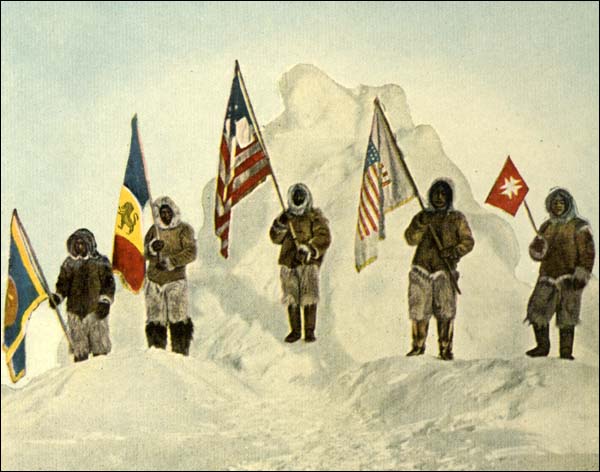
Many people also criticized Peary for not taking Bartlett to the pole, arguing that as an expert navigator, he could have easily documented Peary's claim. Bartlett, however, invariably defended Peary against such criticisms, stating in his Log: "I must chuckle again when I think of people saying that Peary didn't go to the Pole — It was an easy jaunt to the Pole from where I left him, and conditions were improving right along" (164).
Another shadow fell on the expedition after rival explorer Frederick Cook claimed to have reached the pole the previous April. Like Peary, Cook produced no evidence backing up his claim and the two men engaged in a drawn out and public dispute in which each tried to discredit the other. Although public opinion largely favoured Peary's claim, doubts continue to surround both accounts.
Honours and Awards
Following his return to North America, Bartlett embarked on an extensive lecture tour of Europe. Alongside the Hubbard Medal, he received the Royal Geographical Society's silver medal, while Peary accepted the gold. Although five other men accompanied Peary to the pole — African American explorer Matthew Henson and four Inuit guides — they received little recognition for their accomplishments and it was not until 2006 that the National Geographic Society posthumously awarded Henson its Hubbard Medal.
Although Bartlett never reached the pole himself, his three trips north sparked a lifelong obsession with northern exploration. Before he died in 1946, he visited the Arctic more than 20 times, donating an invaluable collection of scientific data and specimens to universities, museums, and other organizations.




